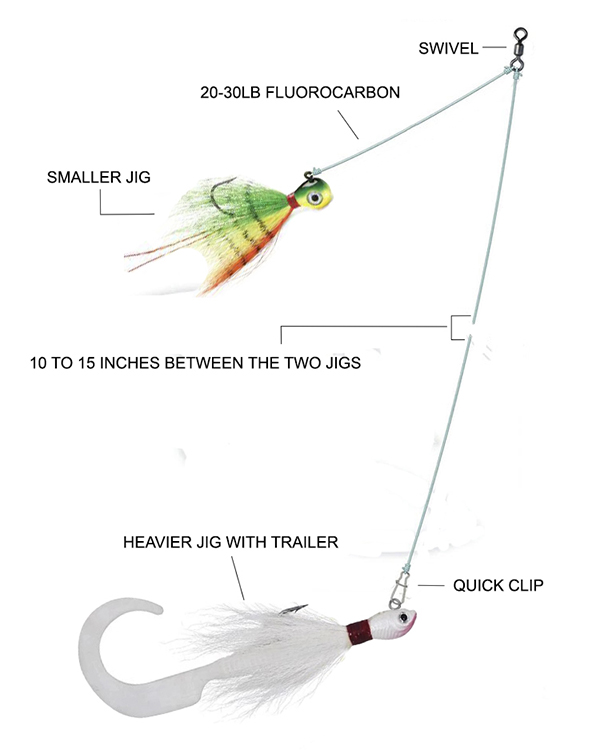Bucktail rigs, sometime referred to as tandem bucktail rigs or fluke rigs, are extremely fun and effective to fish for fluke and flounder. They produce aggressive strikes and produce fewer gut hooks than fishing bait alone. And since anglers must actively work bucktails to provide a life like action, strikes are immediately felt.

The bucktail rig is a simple setup that includes a small jig or ‘teaser’ fly attached higher on the line with a heavier bucktail that sits slightly lower. The bucktail acts as both weight and lure. Anglers will often tip the teaser with a piece of sandworm, sand eel or spearing, and the lower bucktail with a nice size strip of squid or cut fish.
Fish the bucktail rig at a 45-degree angle so that the smaller teaser that sits higher on the line remains close to the bottom as the rig is fished. Bounce it slowly across the bottom while drifting giving the line a wiggle every few moments to provide some action and evoke a strike.
How to tie a bucktail rig
There are a few ways to tie a bucktail rig. Below we’ll outline a few simple options.
- Tie the leader line to the bucktail using an improved clinch knot. Alternatlively, tie the leader to a quick clip which you’ll attach directly to the bucktail.
- About 10-15 inches above the bucktail (or 18-24″ for a larger rig) make a dropper loop in the line. Another option—as shown in the above diagram—is to attach a barrel swivel instead of dropper loop. For a larger fluke rig, increase the distance between the
- Attach the teaser to the dropper loop by running the line through the eye of the teaser jig and wrapping it back around the head. If you’re using a barrel swivel, attach the teaser to the barrel swivel using a 4-6 inch length of 20-30lb flouro or mono line.



